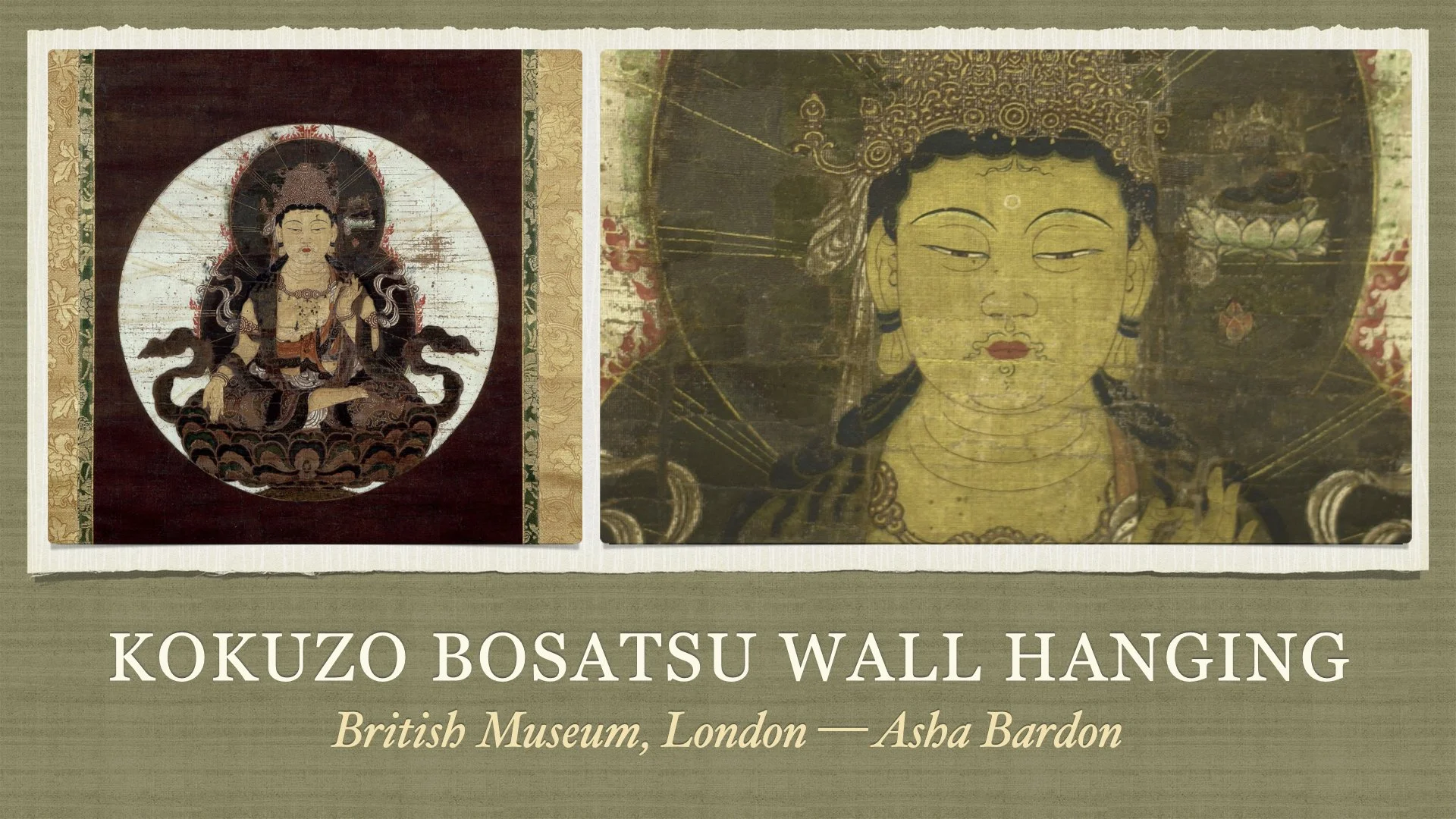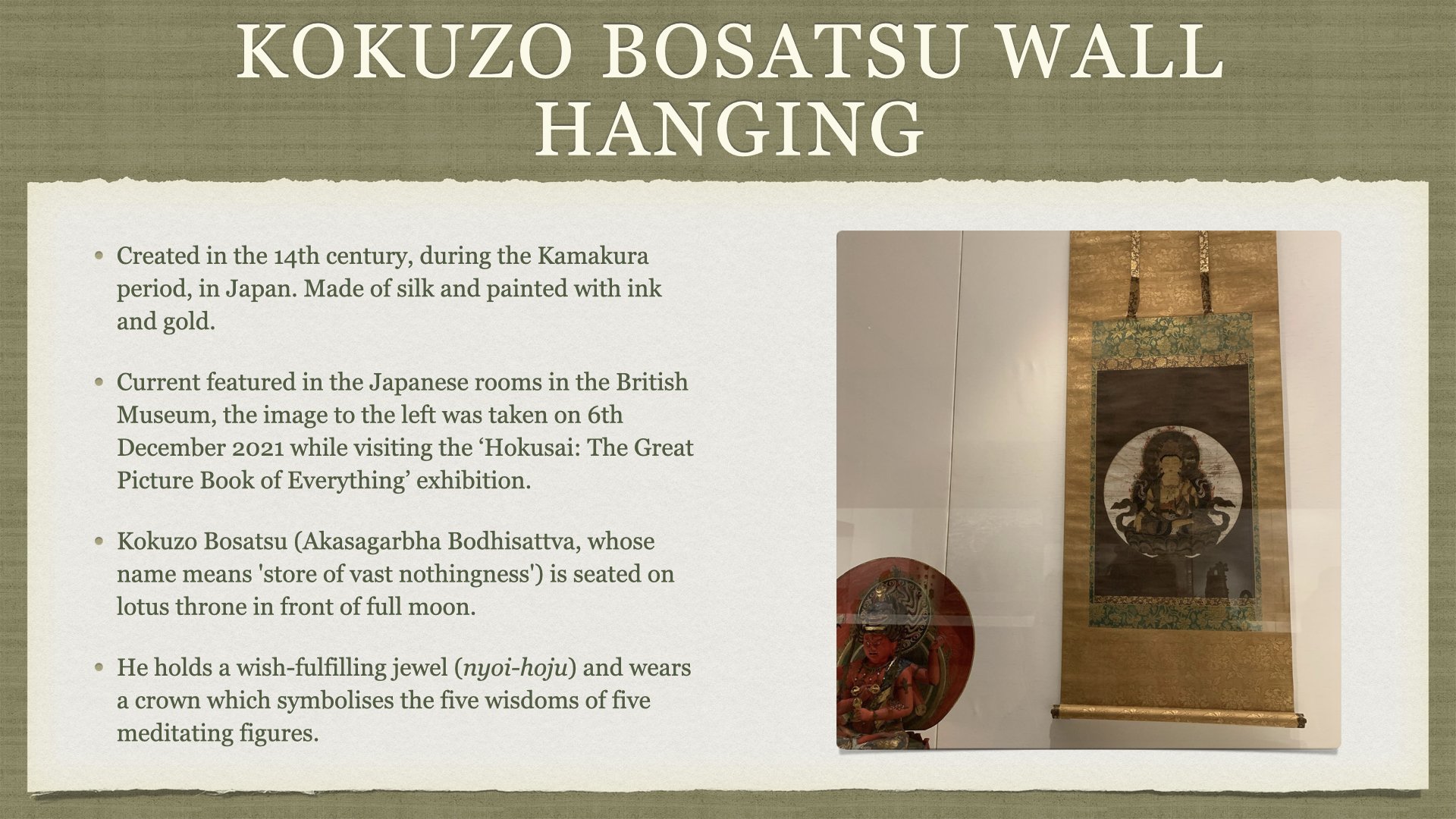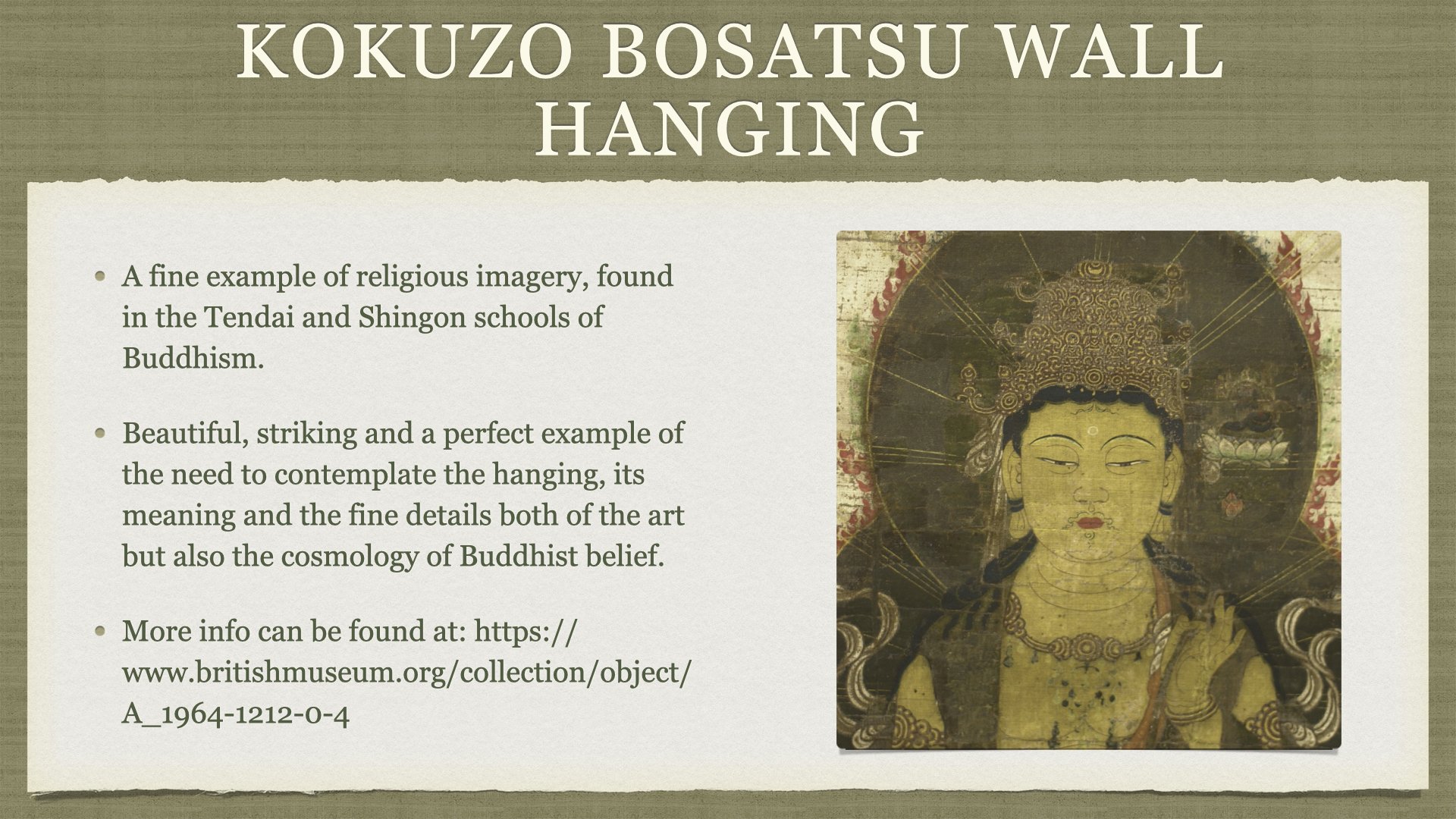Art History: Kokuzo Bosatsu Wall Hanging
Our task for Week Two (15th February 2022) of Art History was to meet with our colleagues studying at the University of Colorado, Boulder. We also had to do a short presentation on a piece of art and a talk on it, via my personal nemesis: Powerpoint (Well, Keynote…).
(Academia runs on Powerpoint and I am trying to learn how to use it academically… Check back for my continuing adventures!)
I’m so glad the British Museum catalogue is now online (one of the few bonuses to the pandemic), as it makes finding stuff from visits so much easier.
When we went in December, I made a point of visiting the Japanese Rooms and taking a lot of pictures. However sometimes I forget to take pictures of the captions (I usually can’t see to read them so it’s a form of assistive recording) so it took a little time to locate the wall hanging I had in mind, seen in the slide below. I don’t usually do art, but I do do religious art. I can understand and read it, as opposed to paintings or other media as I have the context, from doing courses during my BA on Hinduism, Buddhism and reading religious art, specifically.
This hanging (1964,1212,0.4) caught my eye but it was only when I looked it up in the collections catalogue that I got more information on the specifics, as well as some nice close ups. Buddhist art is particularly fascinating as it’s intricate but also designed to be perfect for contemplation and meditation, as there are often intricate details which can be missed on initial viewings. They are also, often, strikingly beautiful.
I ended up making this simple but visually pleasing Powerpoint presentation and, I must admit, this is the first time I’ve actually enjoyed doing so, from the research through to using a chosen template. However, given we had around three minutes, condensing info into such a short time slot is something I’m still working on. I do know it’s a vital skill for anyone in academia (like me) so I want to improve, as well as to stop hating the creation process.
Anyway I understand the lesson, as well as the purpose and it’s nice to find some enjoyment in an otherwise mundane task. I still remember my Religious Studies teacher explaining that meditation wasn’t just about contemplation or sitting in the lotus position, it was about focusing on a task completely, even if that’s washing dishes or folding laundry… Definitely a fitting lesson for this particular task!



